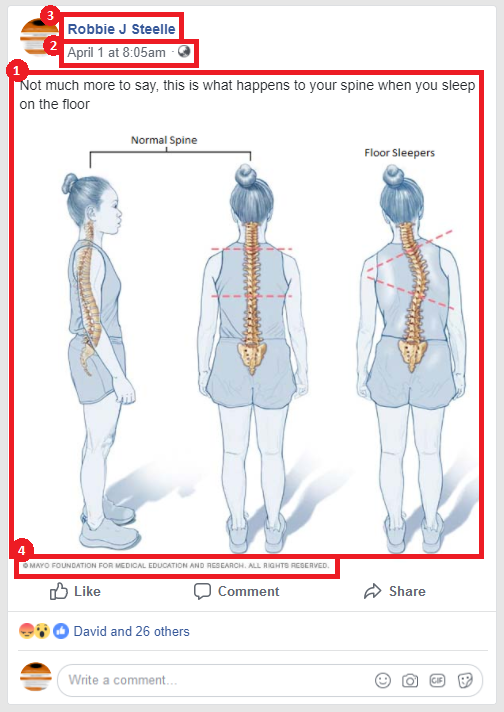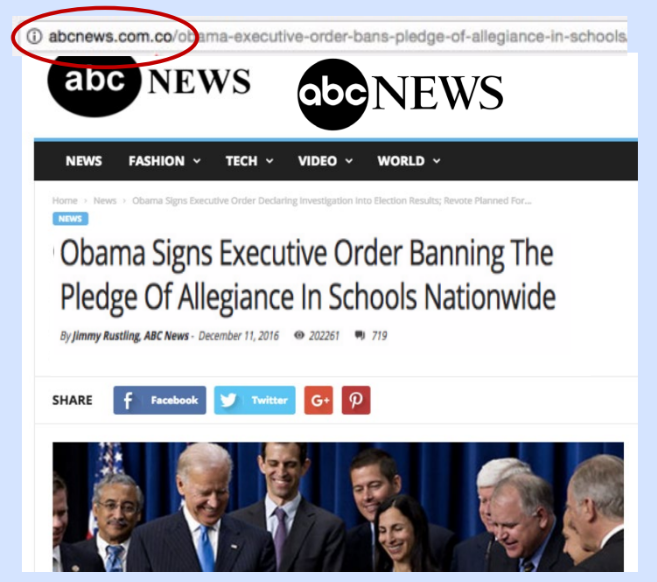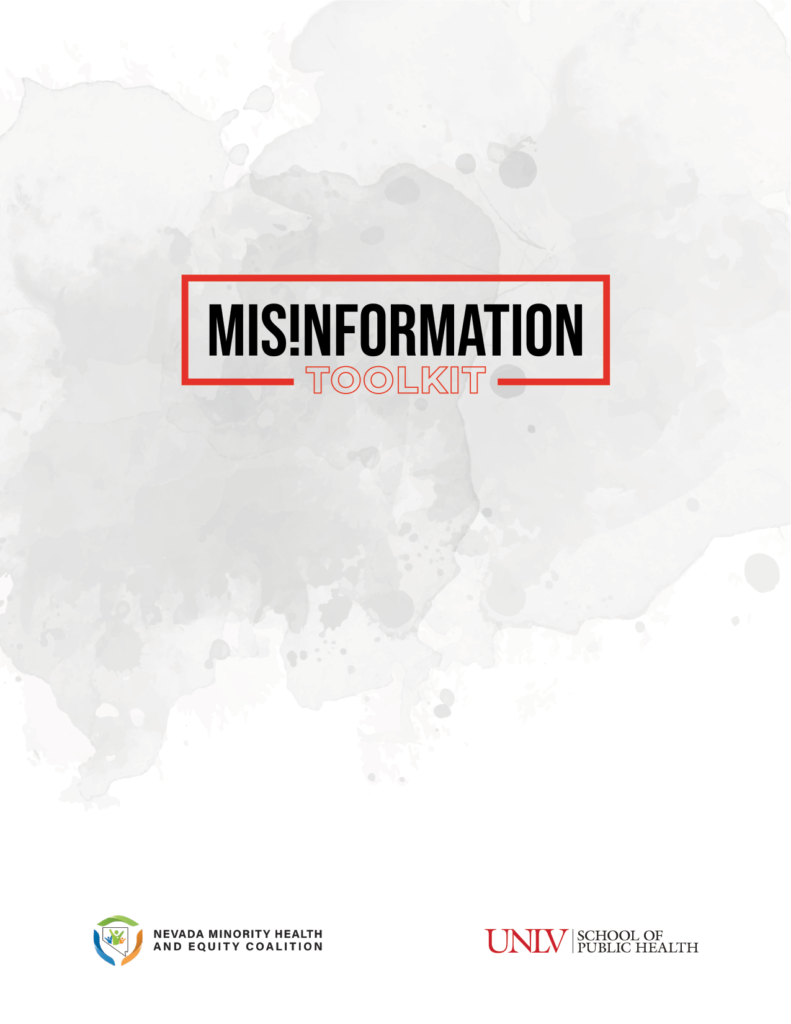What is Misinformation?
Misinformation is information that is false, inaccurate, or misleading and is presented to be true (1). Misinformation can be spread on a variety of topics such as diets, cures for an illness, cosmetic procedures, or things like COVID-19 and vaccines.
Misinformation is generally presented as information that is factual and true but provided outside of its original context. Without context, the meaning of the information can change, which leads to misinformation. Sharing misinformation can be intentional or unintentional. Regardless of intent, misinformation can lead to confusion or behaviors that are potentially harmful to the health of an individual or community.
If misinformation is deliberately shared to trick people, it is called disinformation (2).
Where does misinformation come from?
Information is all around us and comes from many sources such as news outlets, social media, academic research, observations, books, experiments, interviews, reports, speeches, and art.
We get this information from what we call primary or secondary sources. Primary sources are the first to discover or uncover the information, while secondary sources involve some sort of interpretation or analysis of that information (3).
Below are a handful of ways the interpretation or analysis of information from a primary source can lead to the surfacing of misinformation.
Human error
Sometimes misinformation surfaces due to a human error, such as incorrectly entering in data or misplacing pertinent information. These accidental errors can change the context and meaning of the information.
Oversimplification
Oversimplification is another way misinformation can surface, which typically involves making a complex concept simpler than it really is by leaving out some or all of the important pieces of information. Take for example a report released in 2015 by a news outlet that said drinking one glass of red wine was the same as one hour at the gym, but the actual study is about how one compound found in wine could help maximize the benefits of exercise (4). The news outlet oversimplified the actual study by leaving out key details about what was actually studied and what conclusions were made.
Another form of oversimplification of information are quotations that are pulled out of context. Quotations that are pulled out from a full text can give off false or misleading information. Without understanding the context in which the quotation was pulled from, it can give off a completely different meaning than what was intended to be communicated.
Here is an example of how a quote pulled out of context can convey a different message (8) –
This is a quote that was pulled from the Cleveland Clinic website: “getting the COVID-19 vaccine can cause infertility”
The full quotation reads like this: If you’re hoping to get pregnant, you may have heard rumors that getting the COVID-19 vaccine can cause infertility. Let’s debunk that myth right up front: No credible scientific evidence shows the COVID-19 vaccine has a negative impact on fertility.
Misinterpretation
Misinformation can also surface due to misinterpretation of the facts. The misinterpretation can be a result of misunderstanding the research results, cherry-picking statistics that support the argument, or creating misleading graphs or diagrams. Take for example the sample graphs below that are comparing Groups A, B, and C. The graph on the left makes it look like Group A is much larger than B and C. If you take a closer look, the vertical axis of the graph on the left starts at 50 versus 0, which makes small differences between the groups look drastic. The graph on the right shows an accurate depiction of the data because the axis starts at 0.
Exaggeration
Exaggerations can also lead to the creation of misinformation. Typically, we see news outlets or people on social media stretching information to be larger, better, or worse than it really is just to grab attention. For example, a news headline that reads “New Drug Keeps You Healthy Forever!” grabs your attention. However, the article is actually about vitamins to help boost your immune system, which is definitely not a drug and does not mean you will be healthy forever.
Opinions and Beliefs
Opinions and beliefs can shape how we process and share information. An opinion is an honest and personal interpretation of the facts or information presented, while a belief is a personal acceptance of what is true without basis in facts or evidence. Both are influenced by life experiences, perspectives, feelings, or desires and cannot be proven as right or wrong (5,6). Misinformation can surface from opinions and beliefs because of the likelihood of only sharing the pieces of information that align with those opinions and beliefs and leaving out the whole context.
How to Spot Misinformation
Misinformation can show up anywhere, be hard to spot, and anyone can fall for it. Let’s walk through an example of how to spot misinformation on the internet. Although this is just one example, you can use the guiding questions in other situations to help you spot misinformation.

- What does the post say? This post claims that this is what happens to your spine when you sleep on the floor. However, is that actually true? It seems like the post is making a claim, but not providing much evidence for you to learn more.
- When was it posted? The user posted this on April 1st to Facebook, which is April Fool’s Day. Other than the date of the post, there are no other dates to support this claim. It is critical to be mindful of when information is shared, such as times of crisis, when we are vulnerable, or on holidays like April Fool’s Day.
- Who posted this? It looks like a user named Robbie J Steele shared this post, but it is unclear if he is an expert on this topic or if he is a credible source. It’s important to carefully consider who’s sharing the information.
- Where is the data from? On the bottom left of the image we can see that it is originally from the Mayo Foundation for Medical Education and Research. If we take a minute to search the original image, we will find that the purpose of the image is to show a comparison of a normal spine and the spine of someone with scoliosis, not what happens to your spine after sleeping on the floor. It seems like the image was edited to suggest something that isn’t really true.
Why was this posted? Before we make a conclusion about why this was posted, let’s take a look at what we do know to be true: 1) The post was shared on April Fool’s Day, 2) There isn’t much additional explanation to accompany the post, and 3) The original image is actually a comparison between a normal spine and a spine with scoliosis. Based on these facts of the post, we can consider this was likely posted just to get attention and the information shared should not be taken as factual information.

Another way to spot misinformation is by paying careful attention to websites, such as news sites. The company logo, the Uniform Resource Locator (URL) and other features on the page are all designed to replicate the official webpage of the news station. A closer look at these components and features on the page can help one identify a fake website. Notice that these types of websites usually have headings that are very catchy so that people are drawn to click and read more.
This image is an example of a fake news website that was replicated to look exactly like the official abc News site.
Stop the Spread of Misinformation
You have the power to spot misinformation on the internet, and you also have the power to do something about it! Protect others by making sure no one else sees it.
Verify the Information
If you get your news primarily from social media, try to take a few minutes to verify if the information is accurate before you share it.
- Type the information into a search engine to see if it is verified by a credible source like a professional organization, local health department, or health care professional
- You can also use a reputable fact-checking site like
- Snopes.com
- FactCheck.org
- Poynter.org
See a post that is misinformation? You can reduce the spread of the misinformation by reporting the post. Reporting an account is done confidentially.
- Select the three dots icon at the top right of the post you want to report.
- Select Report Post.
- Select False Information and then select the most relevant option.
- Submit
- Select the three dots icon at the top right of the post you want to report.
- Select Report.
- Select False Information and then select the most relevant option. The report will automatically submit once you select the most relevant option.
- Select the three dots icon at the top right of the tweet you want to report.
- Select Report Tweet.
- Select It’s Misleading, then select the most relevant option. The report will automatically submit once you finish selecting the option prompts.
If you are unsure if the information is accurate or not, simply do not share it. Be skeptical, check the facts, and help stop the spread of misinformation!
Intentionally Seek Other Perspectives
Our opinions and beliefs shape what information we typically engage with and share, while the information we engage with can fortify our opinions and beliefs. If you only get your news from one news source, then your perspective on certain topics can differ drastically from a neighbor who gets their news from a different source. Limiting where you get your information can hinder how you view the world and can also increase the spread of misinformation. It is important to learn about and understand perspectives other than just your own, which does not necessarily mean you need to agree with it.
Intentionally seek information from other sources to build your understanding and to expand your perspective of the world. More information builds context, which can lead to the reduction of misinformation.
- Try reading an article on the same topic from an opposing news source
- Seek information from a neutral, nonpartisan news source
-
- Associated Press
- Reuters
-
- Expand your social media, news app, and podcast feeds by engaging with a variety of content
SIFT your resources: you can use this tool to evaluate your sources (7).
S
Stop
Before reading the article, sharing a video, or reacting to a headline, stop and ask yourself these questions:
- Do I know this website?
- Do I know this information source?
- Do I know its reputation?
I
Investigate the Source
Learn more about who is sharing the information. This might be a news organization, a government agency or an educational institution.
F
Find Better Coverage
Explore other sources that have covered the same topic. You can also use fact-checking sites to match and compare the information.
T
Trace the Claims, Quotes, and Media Back to the Original Context
Refer back to original sources that the information was obtained from.
How to Talk About Misinformation
“When talking to friends and family who have misperceptions, we can ask questions to understand their concerns, listen with empathy, and offer guidance on finding sources of accurate information”
– U.S. Surgeon General, Confronting Health Misinformation
We can play a role in protecting and guiding others when talking about misinformation. Here are key points to keep in mind when engaging conversations concerning misinformation:
- Listen
-
- Listen to their fears and why they believe what they do
- Try to focus on the wider issue and how they feel about it instead of the false claim itself
-
- Empathize
-
- Let the person know that you understand why people may find it difficult to trust certain information
- Ask questions to better understand their feelings
- If possible, talk about times you have fallen for misinformation and explain why you were susceptible
-
- Point them to Credible Sources
-
- Acknowledge that finding accurate information can be hard, especially during a pandemic where the current pool of knowledge and policies are constantly changing
- Remind them that an expert on one topic might not be an expert on another topic
- Have a list of sources and explain why it’s credible:
- Suggest nonpartisan news outlets that are known to be accurate
- Suggest asking a trustworthy health care professional such as a doctor or nurse for additional information
- Suggest reaching out to honest community leaders to engage in discussion
-
- Don’t publicly shame
- Have one-on-one conversations with people
- If face to face, use a caring tone and be gentle with your replies
- Practice empathy and listen
- Use Inclusive Language
- Use inclusive and positive language to create an open and welcoming environment to have a discussion
- Health Misinformation Reports and Publications | HHS.gov. Accessed April 17, 2022. https://www.hhs.gov/surgeongeneral/reports-and-publications/health-misinformation/index.html
- Misinformation Vs. Disinformation, Explained. Accessed April 5, 2022. https://www.businessinsider.com/misinformation-vs-disinformation
- Primary vs. Secondary – Primary Sources: A Research Guide – Research Guides at University of Massachusetts Boston. Accessed April 6, 2022. https://umb.libguides.com/PrimarySources/secondary
- Jason Dyck, University of Alberta researcher, reveals truth behind wine study | CBC News. Accessed April 5, 2022. https://www.cbc.ca/news/canada/british-columbia/jason-dyck-university-of-alberta-researcher-reveals-truth-behind-wine-study-1.2937395
- Distinguishing Fact, Opinion, Belief, and Prejudice. Accessed April 6, 2022. https://writing.colostate.edu/guides/teaching/co300man/pop12d.cfm
- Teaching Fact Versus Opinion: Activities & Tips | Houghton Mifflin Harcourt. Accessed April 6, 2022. https://www.hmhco.com/blog/teaching-fact-versus-opinion
- SIFT: Evaluating Sources Online: What is SIFT? Southwest Minnesota State University. Accessed October 24, 2022. https://libguides.smsu.edu/SIFT
- How COVID-19 (and the Vaccine) can Impact Your Fertility. Cleveland Clinic. Accessed October 24, 2022. https://health.clevelandclinic.org/covid-vaccine-and-fertility/

